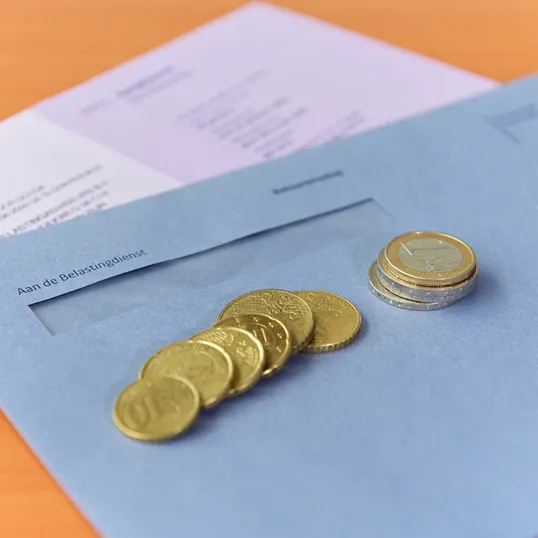Tax refund mortgage
Do you own your own home with an associated mortgage? If so, you are often entitled to an income tax refund. This is also known as mortgage interest deduction. In many cases, you can actually include the mortgage interest you paid as a deduction in your tax return. This means that you deduct the mortgage interest paid from your gross income, which ultimately means you pay less income tax. Thus, with a tax refund based on your mortgage, you achieve a tax advantage.

Conditions for a mortgage interest refund
How exactly does such a mortgage interest refund work? First of all, you have to meet the conditions for a mortgage interest refund. These conditions are:
- You entered into the (mortgage) debt for the purchase, improvement or maintenance of your home which is your main residence. So that means that interest you pay on financing a second home is not deductible. The same goes for a loan you took out for consumption purposes. Of those, the interest is not deductible either.
- Since 2001, you can only deduct mortgage interest for a maximum of 30 years.
- If you sell your home, you must (if you buy a new one within three years) invest the surplus value that becomes available in a new home. This is called the additional loan scheme. Don't you do that? Then you are not entitled to mortgage interest relief on this amount. The loan will then fall into Box 3.
Reduction of mortgage interest relief
Since 1 January 2014, the mortgage interest deduction for the highest income bracket has been phased out by 0.5 per cent each year. Since 2020, this phase-out has been accelerated to three per cent per year. From 2023, the mortgage interest deduction rate is linked to the rate of the lowest income bracket. Thus, the mortgage interest deduction will not disappear altogether in the future, but it has fallen sharply in recent years for people with an income in the highest income bracket.
In 2025, mortgage interest and all other deductible costs for the owner-occupied home will be maximally deductible at a rate of 37.48 per cent.
Claiming mortgage interest deduction: monthly or annually?
You can deduct the mortgage interest you pay annually. You then do so once a year when filing your tax return. You will get the amount of the refund paid into your account in one go. You can also ask the tax authorities for a mortgage interest deduction by means of a provisional assessment. With such a provisional assessment, you get a monthly provisional refund of your mortgage interest, actually an advance on your mortgage interest deduction. This way, you will enjoy your mortgage interest deduction every month and will not have to wait a year for your interest refund.
Change your monthly mortgage interest refund
Does something change in your situation because you have bought another house or refinanced your mortgage, for example? Then it may be smart to change your monthly mortgage interest refund. You must always report a change to the tax authorities yourself. You do this by looking up and selecting the form ‘Request or change provisional assessment’ on the website of the Tax and Customs Administration. Then log in with your DigiD and go through all the steps of the online form. Sign the form and, if all goes well, you will receive notification of your provisional refund within five weeks. If you have received too much refund, you will have to pay it back. If you have paid too much (or received too little), you will receive a refund from the Tax Administration.
When will you receive the monthly refund?
If you have chosen to also claim the monthly mortgage interest refund, you will receive the amount in your account on the 15th of the month. The description will include IB/PVV and the year. That way you know it's the mortgage interest deduction.
Mortgage interest refund calculation
Would you like to know how high your mortgage interest refund is or will be? Then use our example calculation. If you study it carefully, you can then easily calculate your mortgage interest refund yourself and thus your tax advantage. Please note that the example calculation is somewhat simplified. In reality, for instance, you also have to take into account the flat-rate owner-occupied house. The example is therefore particularly useful if you want an indication. This way, you can calculate your mortgage tax refund fairly easily.
Transitional law on mortgage tax refunds
Did you take out your mortgage after 1-1-2013? Then only the interest for annuity and linear mortgages is deductible. For mortgages from before 1-1-2013, more generous rules apply to mortgage interest deduction. This is called transitional law.
Other deductible expenses
In addition to the annual mortgage interest, you may also deduct certain costs incurred in the year of purchase once. These include valuation costs, advice costs for the mortgage, notary fees for drawing up the mortgage deed, NHG guarantee commission and costs for extending the offer. Common costs you cannot deduct include notary fees for drawing up the conveyancing deed, estate agent's commission, transfer tax and costs for a bank guarantee. If you refinanced your mortgage in the past year, you may also deduct the penalty interest in that year under certain conditions.
Need help with your tax return or applying for a monthly mortgage interest refund? We will be happy to help. Feel free to make an appointment with one of our experts to go through everything.